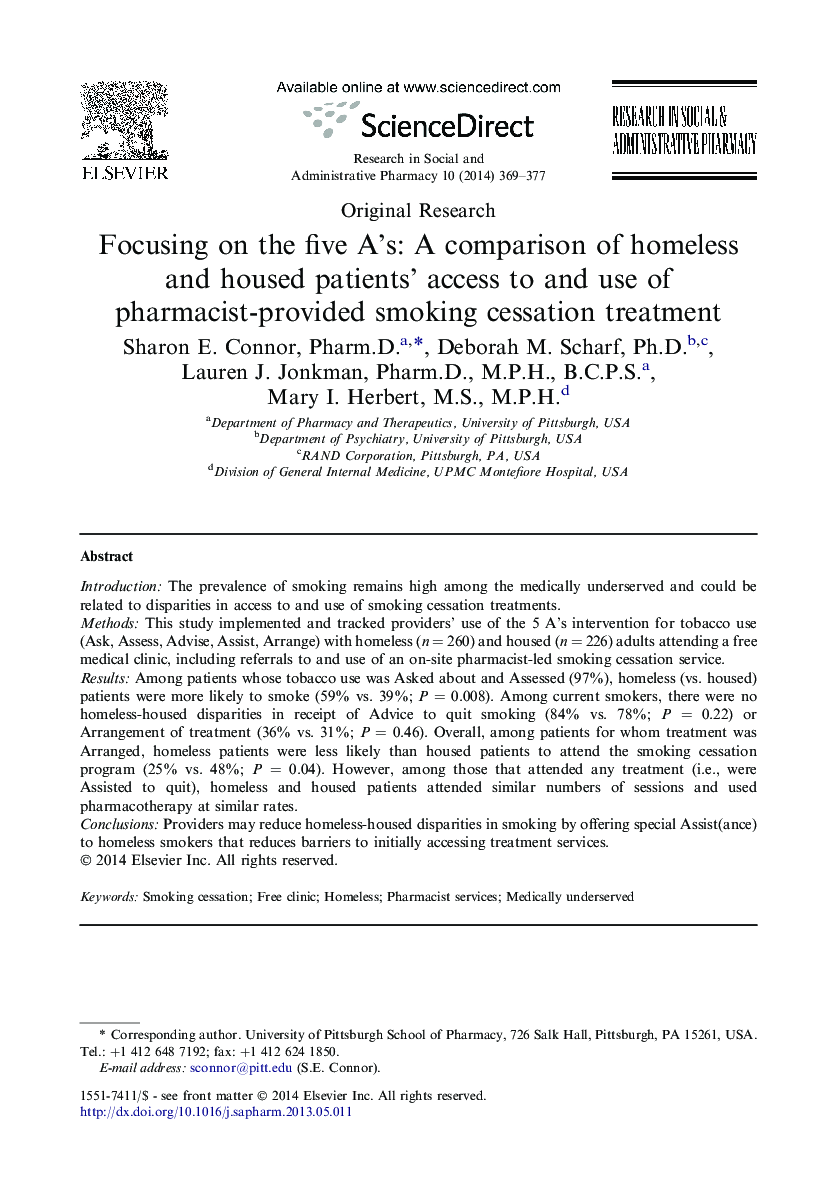| Article ID | Journal | Published Year | Pages | File Type |
|---|---|---|---|---|
| 2508574 | Research in Social and Administrative Pharmacy | 2014 | 9 Pages |
IntroductionThe prevalence of smoking remains high among the medically underserved and could be related to disparities in access to and use of smoking cessation treatments.MethodsThis study implemented and tracked providers' use of the 5 A's intervention for tobacco use (Ask, Assess, Advise, Assist, Arrange) with homeless (n = 260) and housed (n = 226) adults attending a free medical clinic, including referrals to and use of an on-site pharmacist-led smoking cessation service.ResultsAmong patients whose tobacco use was Asked about and Assessed (97%), homeless (vs. housed) patients were more likely to smoke (59% vs. 39%; P = 0.008). Among current smokers, there were no homeless-housed disparities in receipt of Advice to quit smoking (84% vs. 78%; P = 0.22) or Arrangement of treatment (36% vs. 31%; P = 0.46). Overall, among patients for whom treatment was Arranged, homeless patients were less likely than housed patients to attend the smoking cessation program (25% vs. 48%; P = 0.04). However, among those that attended any treatment (i.e., were Assisted to quit), homeless and housed patients attended similar numbers of sessions and used pharmacotherapy at similar rates.ConclusionsProviders may reduce homeless-housed disparities in smoking by offering special Assist(ance) to homeless smokers that reduces barriers to initially accessing treatment services.
